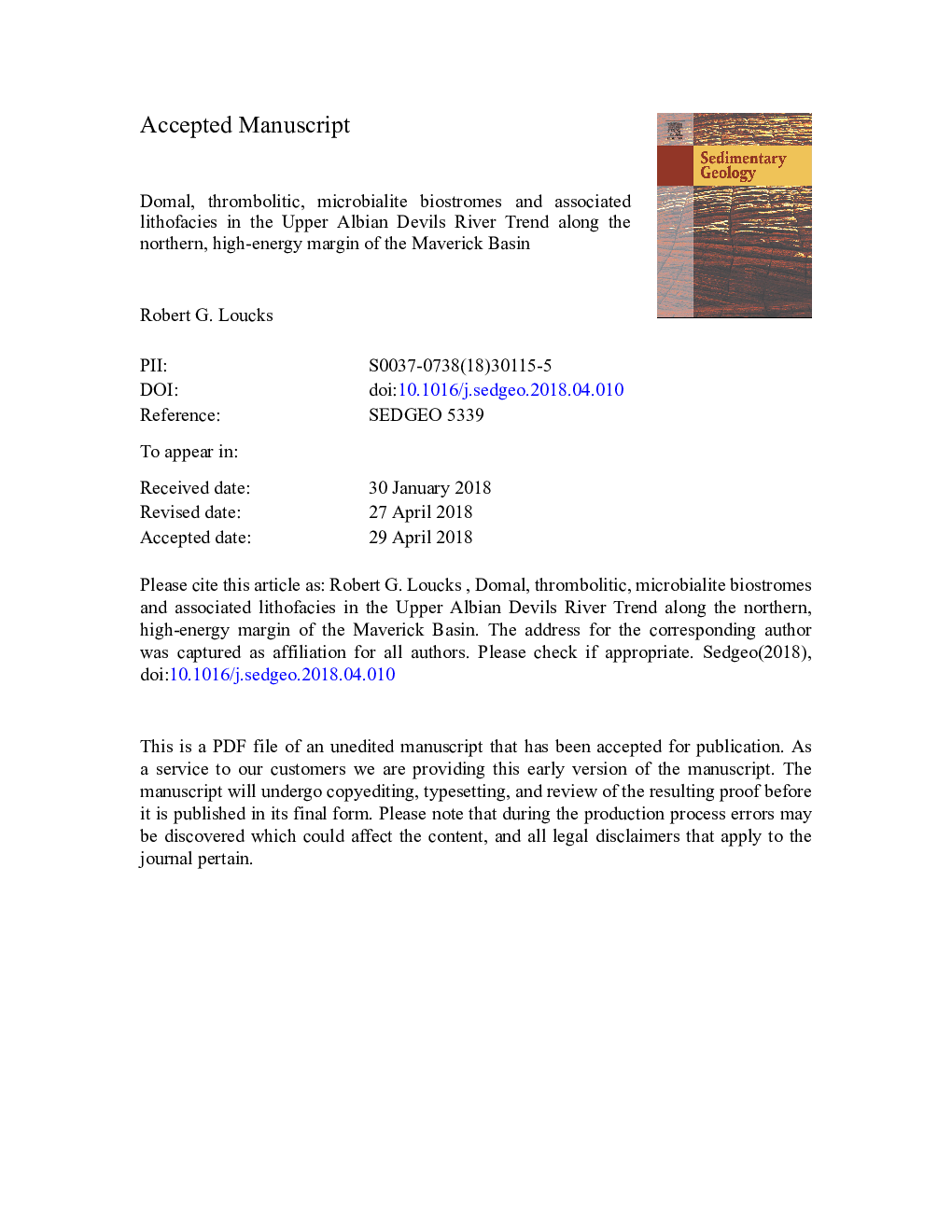| کد مقاله | کد نشریه | سال انتشار | مقاله انگلیسی | نسخه تمام متن |
|---|---|---|---|---|
| 8908498 | 1635992 | 2018 | 54 صفحه PDF | دانلود رایگان |
عنوان انگلیسی مقاله ISI
Domal, thrombolitic, microbialite biostromes and associated lithofacies in the Upper Albian Devils River Trend along the northern, high-energy margin of the Maverick Basin
ترجمه فارسی عنوان
دامنه، ترومبولیتیک، بیواسترومهای میکروبیالیتی و لاتوهای مرتبط با آن در رودخانه رودخانه ابلیس قدیم در امتداد شمال حاشیه انرژی بالا حوضه ماوریک
دانلود مقاله + سفارش ترجمه
دانلود مقاله ISI انگلیسی
رایگان برای ایرانیان
کلمات کلیدی
میکروبیالیت، ترومبولیت، روند شکارچیان رودخانه، آلبیان، حوض موریک،
موضوعات مرتبط
مهندسی و علوم پایه
علوم زمین و سیارات
فرآیندهای سطح زمین
چکیده انگلیسی
The Lower Cretaceous Devils River Trend on the northeast margin of the Maverick Basin in southwest Texas contains unique deposits of large domal, thrombolitic, microbial biostromes that have not been identified elsewhere in the Albian of the onshore Gulf of Mexico. These microbial biostromes are overlain by microbial-dominated, moderate-energy grainstones to mud-free rudstones. Above the grainstone to rudstone section is a hiatus (the Albian-19, high-frequency-sequence maximum flooding surface), and above this hiatus are large caprinid rudist bioherms. The overall setting for these carbonate deposits is the moderate- to high-energy north rim of the intraplatform Maverick Basin that is approximately 150 mi (240â¯km) behind the Stuart City Reef Trend. Four levels of description are necessary to describe the biostromes: (1) megalevel (overall external form)-domal biostromes, (2) macrolevel (larger internal form or layering)-sinuous convex-up layers within domes, (3) mesolevel (basic growth morphology-clotted thrombolites [subvertical to vertical]), and (4) microlevel (microbialite basic texture)-microbial peloids and mesoclots (clots of microbial-mediated material-mainly packed clusters of dark, micritic peloids). The thrombolitic peloids and mesoclots are arranged in digitate to randomly branching growth forms. The thrombolites are very microporous. Growth-framework cavities with sediment fill are common and are filled with mesoclots, peloids, clasts, miliolids, ostracods, echinoid fragments, bivalve fragments, and gastropods. The microbial biostrome is not continuous but has gaps (channels) filled with microbial-dominated grainstone and mud-free rudstones. The microbial-dominated grainstone and mud-free rudstone strata above the microbial biostrome are continuous, although irregularly bedded, with some beds being cross-stratified, and they are composed of fossiliferous, peloidal, mesoclot grainstone with abundant biota encrusted in a microbial coating. The domal, thrombolitic, microbialite biostrome is interpreted to have been deposited on a moderate-energy, semirestricted intraplatform rim at the northeast edge of the Maverick Basin during a higher order transgression. The microbial-dominated strata may have been associated with high nutrient concentrations and initial low sedimentation rates, followed by low to moderate sedimentation rates. The microbial-dominated grainstones and mud-free rudstones above were laid down in a moderate-energy environment during continued transgression. A sharp break exists with the shelf-interior, high-frequency highstand cycle above, which contains abundant rudist bioherms but no microbialites. Most of the primary megapores (growth-framework cavities and interparticle pores) are cemented with equant calcite. Nano- and micropores are extremely abundant within the microbial-related strata. These deposits would make good microporous reservoirs in the subsurface.
ناشر
Database: Elsevier - ScienceDirect (ساینس دایرکت)
Journal: Sedimentary Geology - Volume 371, September 2018, Pages 75-88
Journal: Sedimentary Geology - Volume 371, September 2018, Pages 75-88
نویسندگان
Robert G. Loucks,
